- Resources increased by 4% to 11.1 Mt LCE. M&I resources account for 74% of total resources (previously 69%), implying increased confidence.
- After a two-year downturn, lithium prices are turning around, a rebound we forecasted earlier this year. Prices have jumped 18% in the past month, though they remain down 9% YoY, and 88% from their late 2022 peak. Current levels are below the break-even point for most new large-scale projects, and we believe a sustained price of at least US$15k/t is necessary to incentivize development. We expect this rebound to continue as the market moves toward a projected 2026 supply deficit. This deficit will be driven by battery demand from core EV and energy storage markets, as well as from rapidly growing sectors like AI data centers, robotics, and automation.
- LKE is trading at just US$4/t LCE vs the sector average of US$31/t.
- Management anticipates Environmental Impact Assessment (EIA) approval by the end of the year. The latest DFS enhances Kachi’s market appeal, and with improving sentiment, we believe the prospects for M&A or securing a strategic partner to move Kachi toward production have strengthened.

Price and Volume (1-year)

| |
YTD |
12M |
| LKE |
-26% |
23% |
| ASX |
8% |
15% |
Kachi Lithium Brine Project
Argentina is the fifth largest lithium producer in the world, with the third largest reserve-base
Argentina recently introduced the Large Investment Incentive Regime (RIGI), offering tax breaks, customs incentives, and legal stability to attract large-scale mining investment
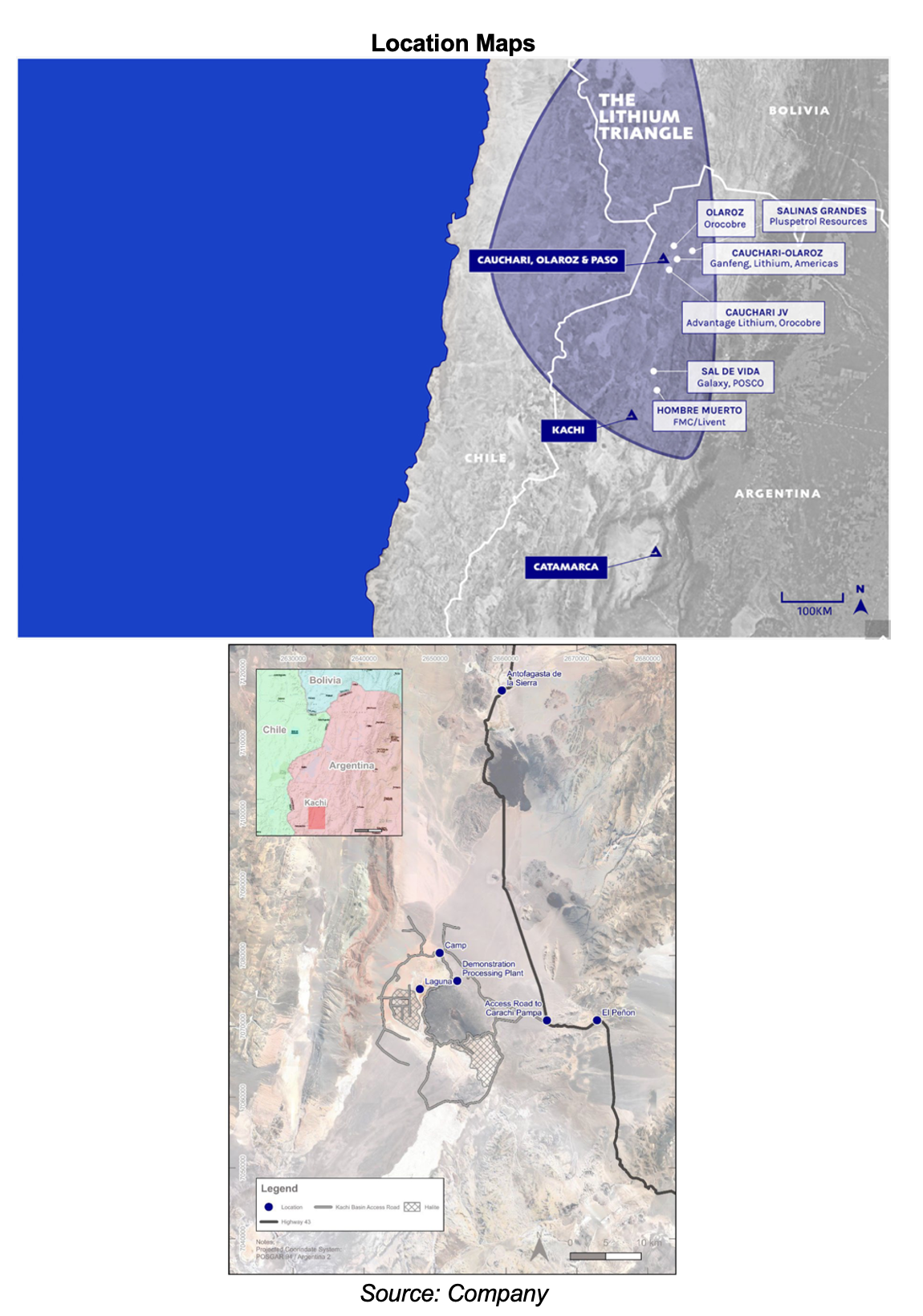
We believe RIGI could boost sentiment and M&A interest, indirectly benefiting juniors with advanced assets
Kachi is located near several well-known lithium brine projects, including Ganfeng Lithium’s recently commissioned Mariana project, and Arcadium Lithium’s Hombre Muerto operation (acquired by Rio Tinto for US$6.7B)
2023 DFS vs 2025 DFS
Relative to the 2023 DFS, the 2025 DFS demonstrated improved project economics, primarily driven by higher grades and recovery rates. The study also incorporated a more efficient project design, resulting in lower CAPEX, OPEX, plant footprint, and reagent consumption. Additionally, studies on the Direct Lithium Extraction (DLE) technology planned for the project indicate potential for higher recovery rates (90% vs 80%). Note that while DLE technologies have demonstrated strong potential at the lab and in pilot studies, their large-scale commercial deployment remains in the early stages.
The 2025 DFS returned superior economics, driven by a 3% reduction in OPEX to US$5,895/t, and a 16% reduction in CAPEX to US$1.16B
NPV and IRR are not comparable, as the 2023 study used higher lithium prices, and a lower discount rate. The 2025 DFS returned an AT-NPV10% of US$1.01B, and an AT-IRR of 19.7%, using US$20.4k/t LCE vs the current spot price of US$9.9k/t
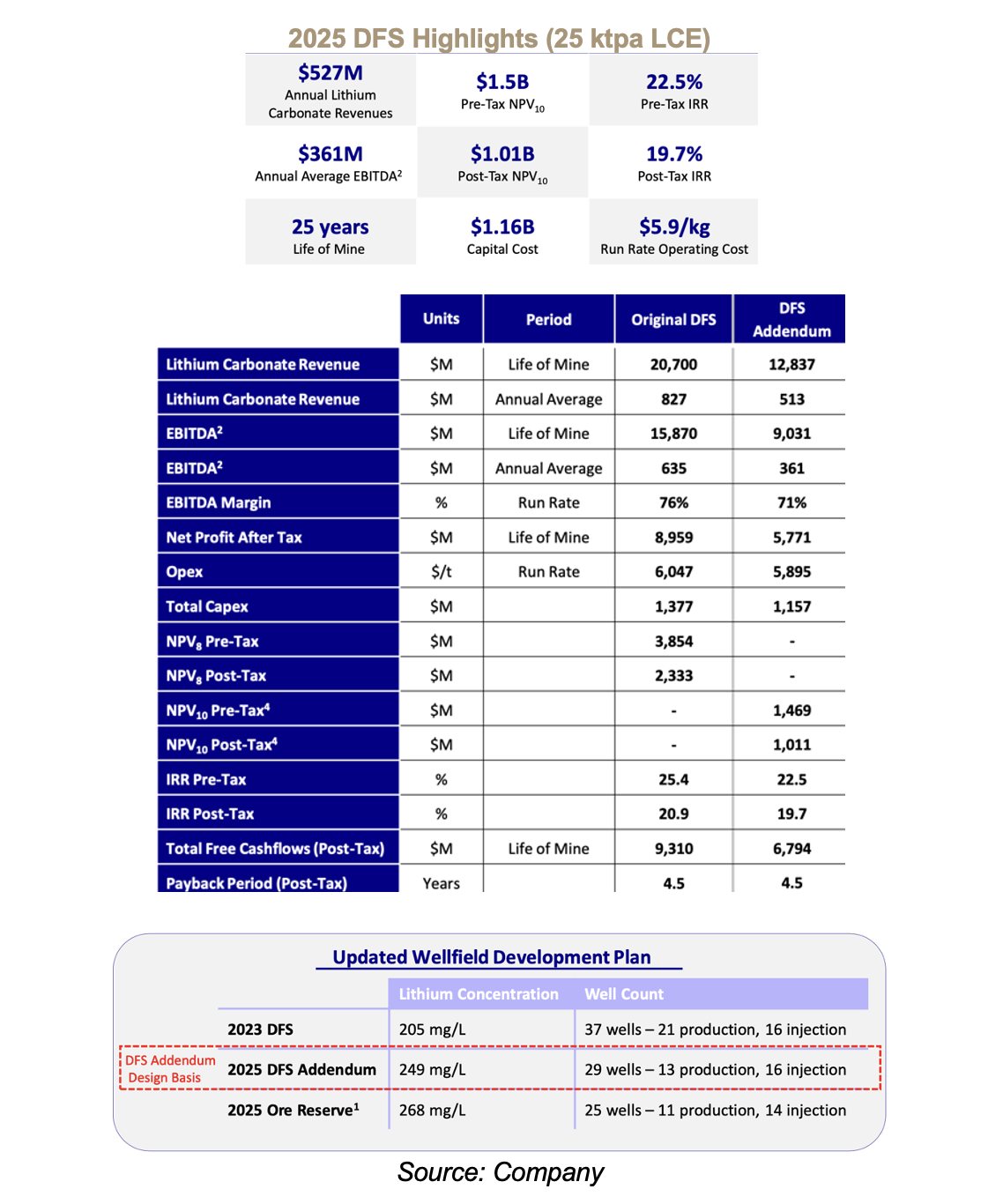
While the study did not disclose NPV at spot, we estimate break-even at approximately US$15k/t LCE. Grades increased by 21% to 249 mg/L
Sensitivity Charts
NPV and IRR are highly sensitive to LCE prices
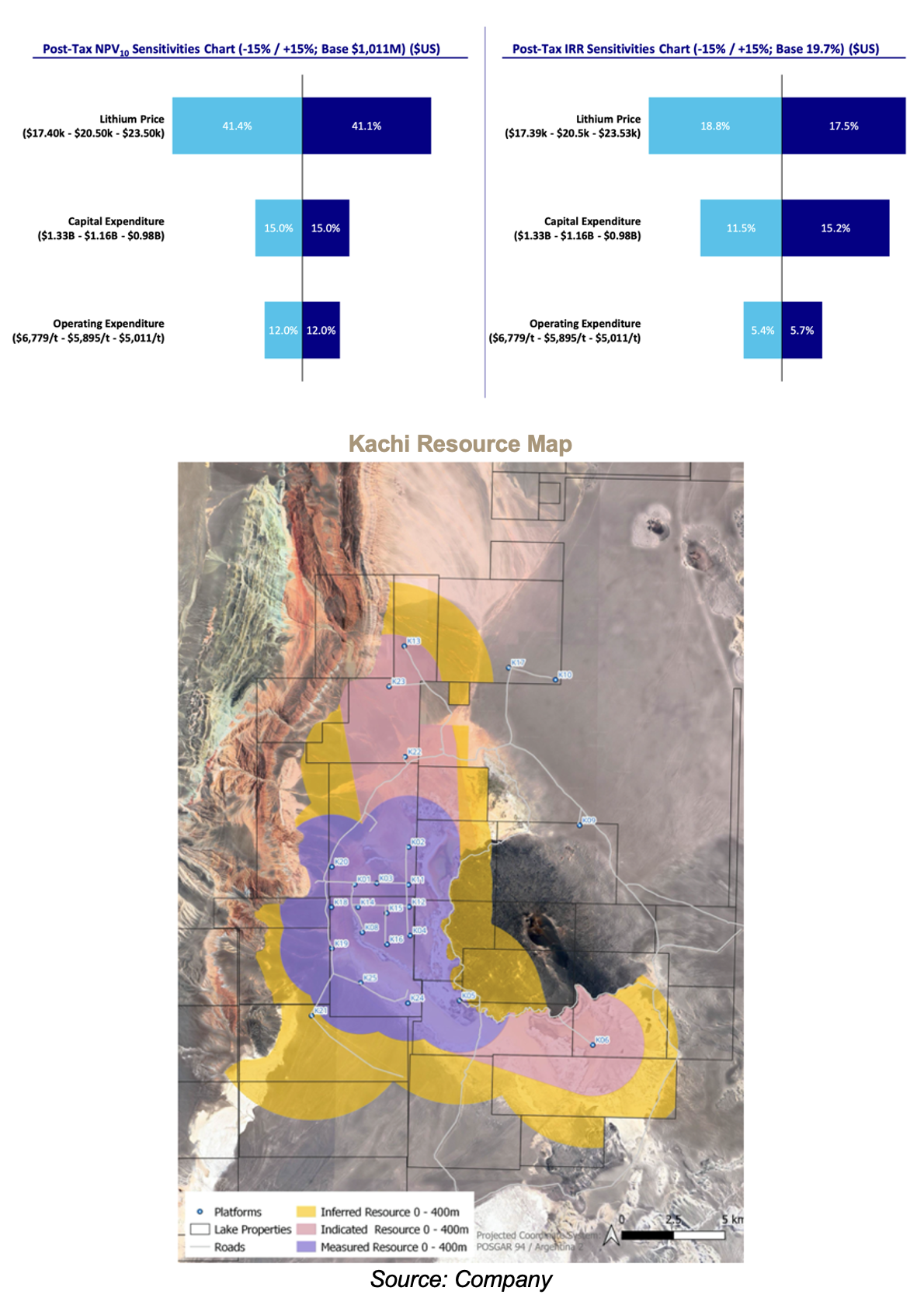
Kachi hosts a large tonnage-relatively low grade deposit over a 274.8 km2 area . We believe the DFS was conservative, as it incorporates less than 9% of the total M&I resources
In May 2025, LKE completed an updated resource estimate, incorporating the results of an additional well (K25D44) since the previous estimate in November 2023.
Resources increased 4% to 11.07 Mt LCE
The weighted average grade remained relatively flat at approximately 219 mg/L. M&I resources account for 74% of total resources (previously 69%), implying increased confidence
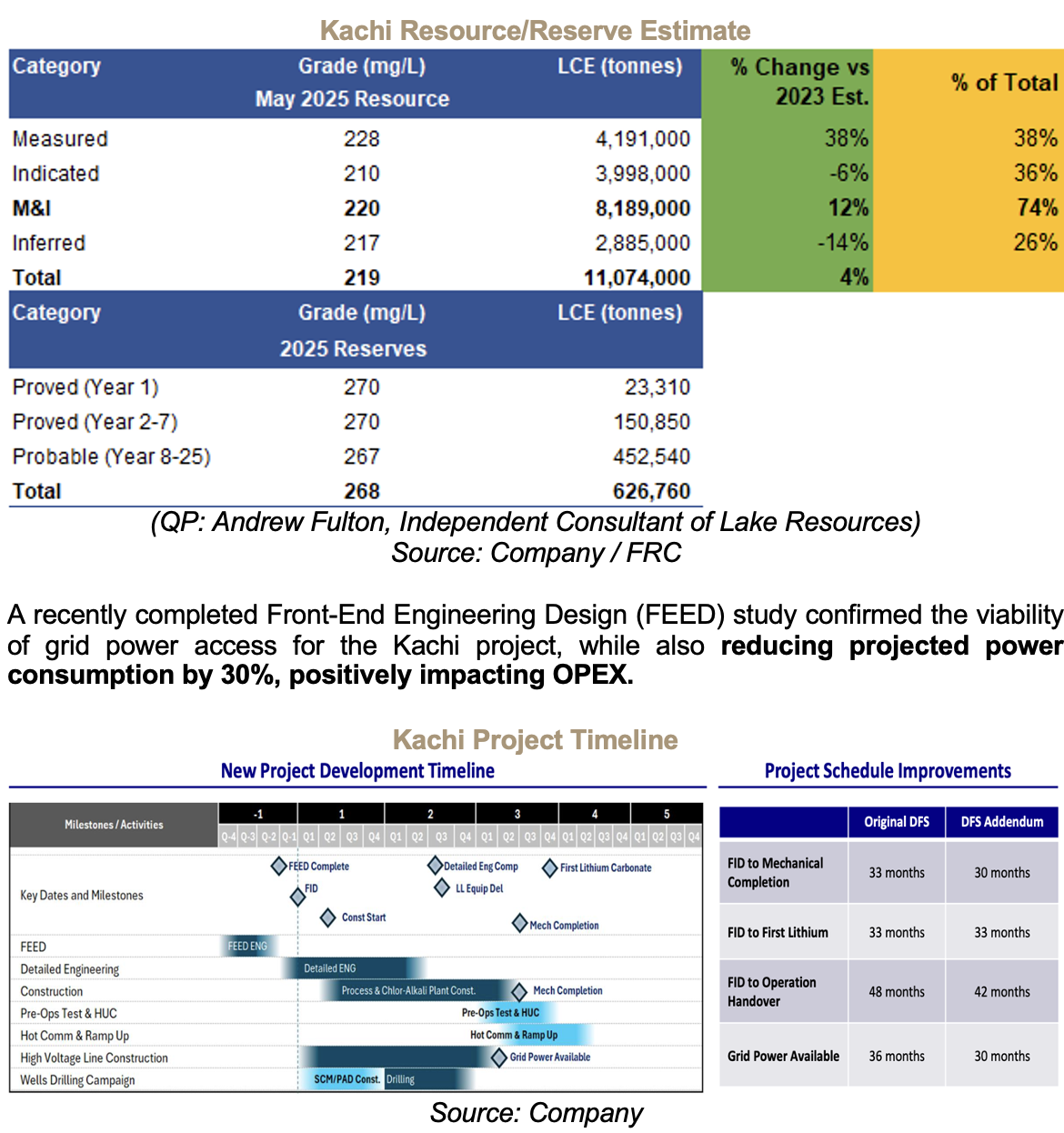
Management anticipates EIA approval by end of 2025, and is actively seeking a strategic partner to advance the project towards production in three-four years, which we consider a reasonable timeline
Financials
Strong balance sheet. Subsequent to June 2025, LKE completed a $2.10M equity financing
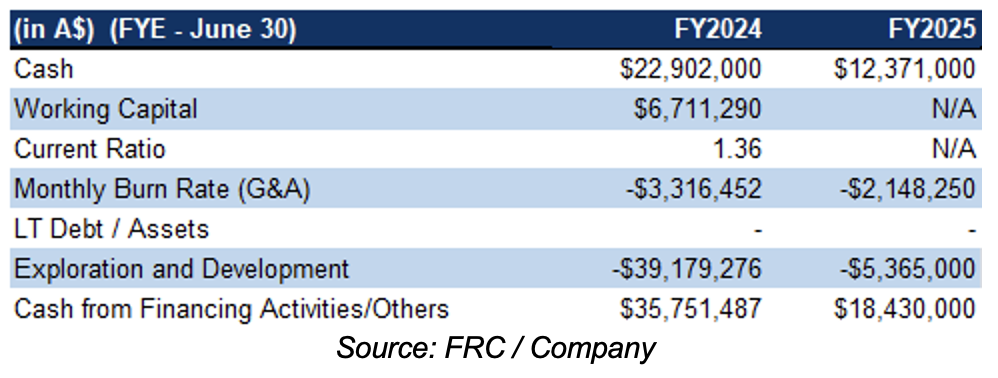
FRC Projections and Valuation
LKE is trading at just US$4/t LCE vs the sector average of US$25/t (previously US$23/t), making it one of the most undervalued juniors on our list of lithium juniors
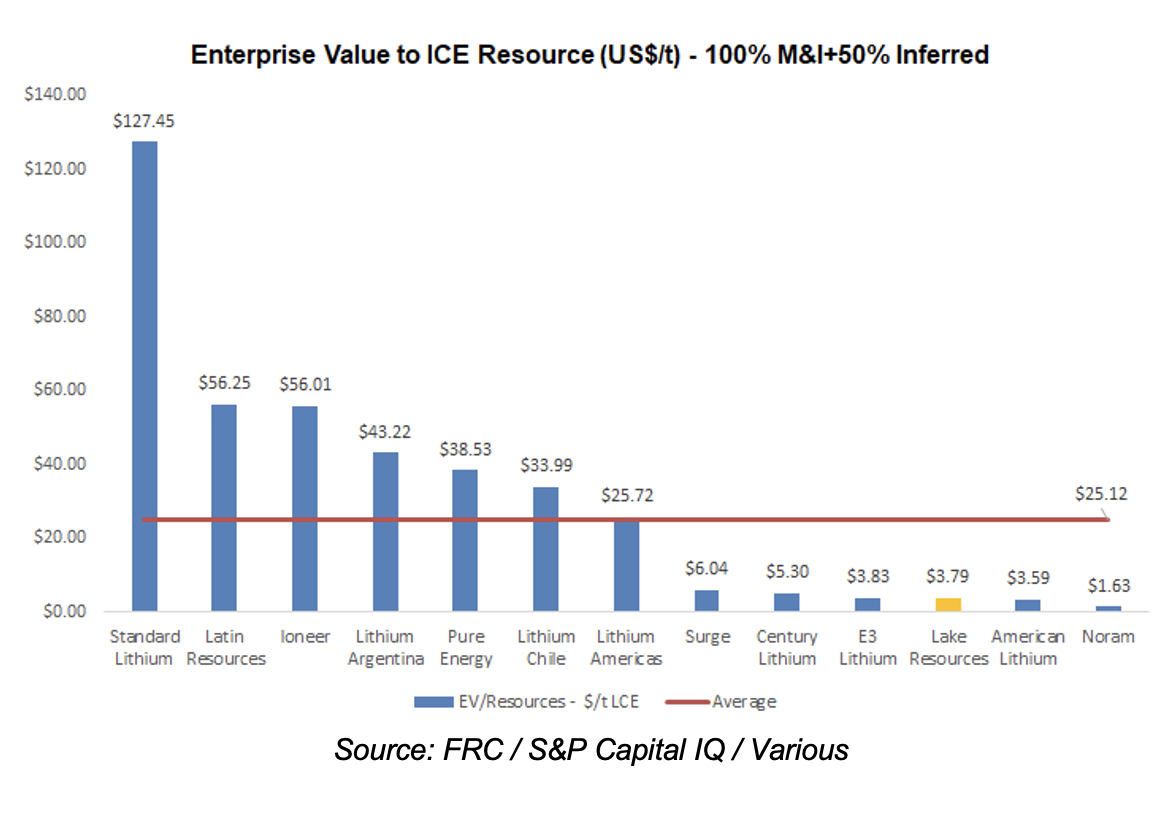
Applying US$25/t to LKE’s resources, we arrived at a comparables valuation of A$0.20/share (previously A$0.21/share)
Valuation declined due to share dilution since our previous report
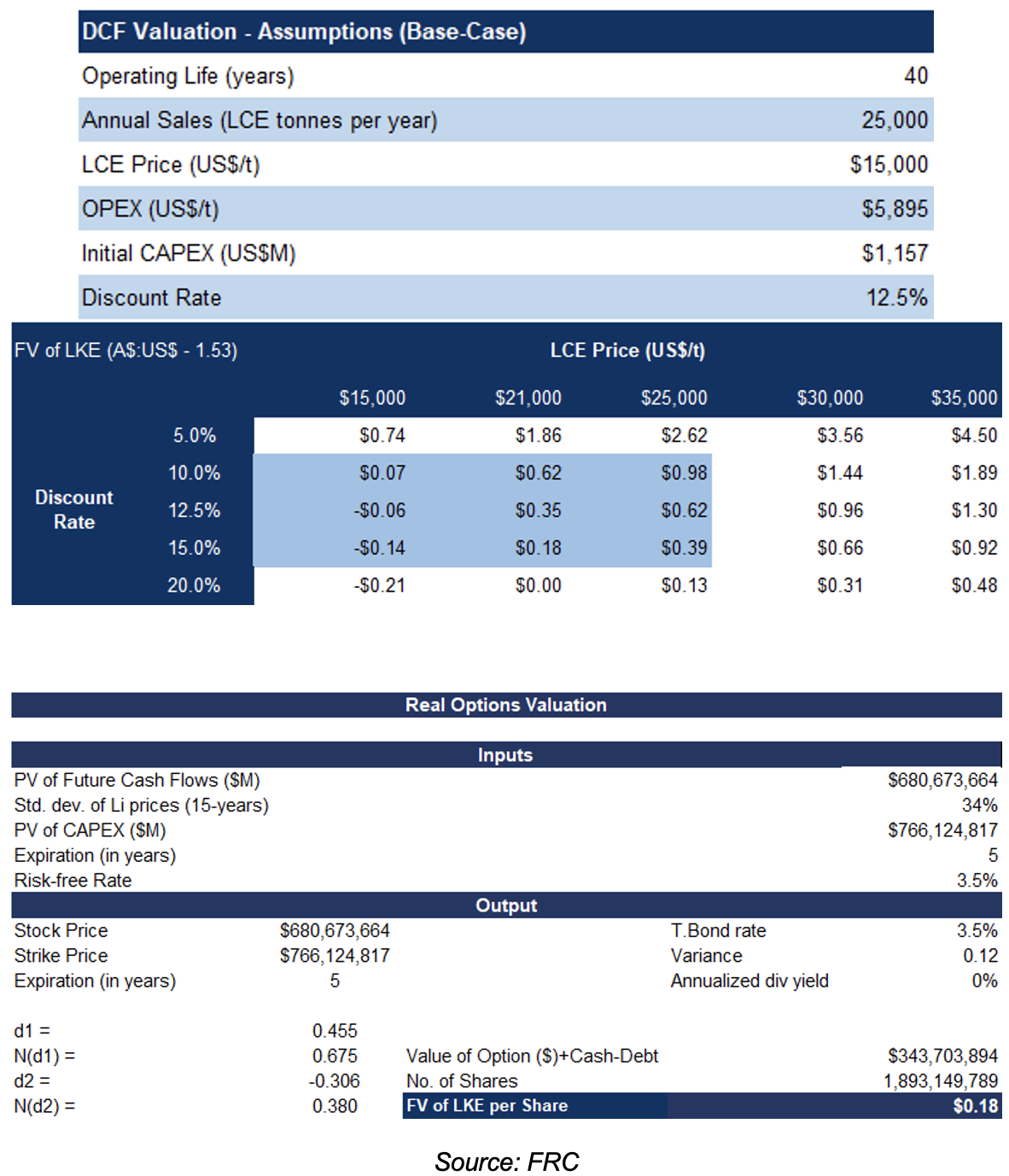
Despite lower OPEX and CAPEX estimates, our DCF valuation for Kachi, based on a conservative long-term LCE price forecast of US$15k/t, still returns a negative NPV
Our real options valuation rose 15% to $344M, but per-share value stayed at $0.18 due to share dilution since our previous report
We believe the real options valuation model is a good technique to value earlier stage resource projects, as it factors in commodity price volatility, and management’s ability to pursue, abandon, or delay project development
We are reiterating our BUY rating, and are adjusting our fair value estimate from $0.14 to $0.13/share (the average of our DCF, real options, and comparables valuations). The updated DFS demonstrates meaningful progress, with reduced CAPEX and OPEX, increased resource confidence, and a solid US$1B NPV despite currently depressed lithium prices. With lithium markets showing early signs of recovery, and a projected supply deficit by 2026, we believe Kachi is well-positioned to benefit from renewed investor and strategic interest. The company’s current valuation—just US$4/t LCE versus a sector average of US$31/t—offers a compelling entry point.
Risks
We are maintaining our risk rating of 5 (Highly Speculative)
We believe the company is exposed to the following key risks (not exhaustive)::
- Volatility in lithium prices
- Development
- Large projects are capital intensive
- Permitting
- Potential for delays in project financing and development
- FOREX













